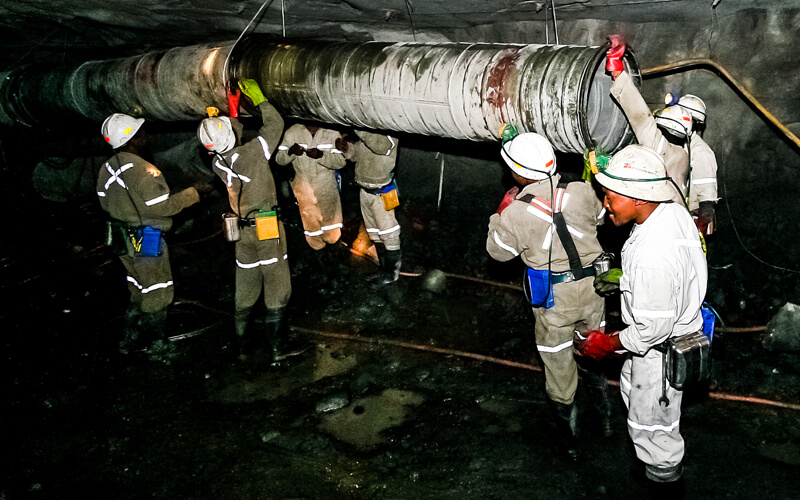
Electronics Manufacturing’s Conflict Minerals Journey
IBM recently published a report entitled IBM’s Journey in Responsible Minerals Sourcing that describes how their “Responsible Minerals team delivered its second year of a 100-percent conformant 3TG supply chain.”
While they are not the only electronics manufacturer to make this claim (for example, Intel and Apple do as well), they are the only finished goods manufacturer of exclusively business and commercial electronic equipment I am aware of to do so.
The degree of challenge to achieve this – by any of these manufacturers but particularly by IBM – cannot be underestimated. While no longer a hardware colossus, IBM still sells $7 billion worth of complex systems annually. Indeed, the report notes the “many challenges that had to be addressed and overcome in order to make lasting progress.” Some of those challenges that IBM, like many others, have faced include:
- Identifying 3TG (tin, tantalum, tungsten, gold) sources
- Working with suppliers (limited skilled personnel, high turnover, reluctance to comply)
- IBM’s own product designs (single-sourced components, low volumes and the resulting limited influence on suppliers)
The report goes on to identify and describe – in good detail – the steps they took to achieve a 100-percent conformant supply chain. Without IBM providing expertise, insight and advice that many in its upstream supply chain did not have in-house, they would not have been able to achieve their goals.
Of course, as IBM’s capabilities improved, so did capabilities throughout the industry. The quality of conflict mineral reporting improved dramatically in the first several years following the SEC’s Form SD initial reporting date of 2014 due to improvements in skills and expertise at IBM, Intel, Apple and others, along with what is now known as the “Responsible Minerals Initiative”.
As with all expansive and horizontal requirements like conflict minerals (and environmental compliance), a truly critical piece of the puzzle was executive management support and ownership, as well as formation of a strong team (which IBM had, years before, developed for environmental compliance).
As industry’s conflict mineral focus expands to encompass cobalt, mica and ultimately even more substances and minerals, corporate management must understand that this cannot be treated as just a side project for a single individual contributor. Compliance – or the lack thereof – can be an existential threat and must be understood and treated as such.
C-suite ownership, appropriate funding and resource allocation, technology and external service tools as needed, along with procurement/supply base management support, are all critical to properly managing a responsible minerals program, as well as product environmental compliance.
I won’t say this is a cautionary tale; it’s more like a roadmap to develop a successful infrastructure for these challenges. It took a giant like IBM a decade of work to achieve its goal in this area, but with executive focus, significant funding and a dedicated team, it is within any manufacturer’s capability.
EPA’s PIP (3:1) Public Comment Period
In late October (as noted in my previous column) the U.S. EPA proposed a further extension of the compliance date “applicable to the processing and distribution in commerce of certain PIP (3:1)-containing articles, and the PIP (3:1) used to make those articles until October 31, 2024, along with the associated recordkeeping requirements for manufacturers, processors, and distributors of PIP (3:1)-containing articles.”
The EPA has been accepting public comments in docket EPA-HQ-OPPT-2021-0598 on www.regulations.gov for 60 days from publication of the proposed rule. Comments must be received on or before December 27, 2021.
In the proposal, EPA says they “primarily based this proposal on the low end of the timelines provided by commenters and the specific, detailed timeline laid out by the consumer electronics sector.”
Therefore, this extension is not expected to cover all of industry. They believe they have done enough outreach and now it is up to manufacturers who believe they need more time to comply to provide input with extensive detail regarding the timeline necessary.
The EPA noted that many commenters suggested longer timelines, ranging from four to seven to as much as fifteen years or more, although most did not provide sufficient detail to support these timelines.
It is this group they are hoping, in particular, to hear from during this comment cycle. If this group includes you, read through the entire proposal and give thought to the extent of the information and the depth of detail you need to provide to justify your recommendations. You only have until December 27.
Section III C. of the proposal says that “EPA intends to commence a new rulemaking effort on PIP (3:1) and the other four chemical substances regulated under TSCA section 6(h) and anticipates issuing a proposal in 2023.”
That a government agency believes it has to entirely rethink regulations recently put in place does seem rather remarkable. But the EPA finds itself in a remarkable place now, with a scope of industry and products much broader than they were used to dealing with. One of the areas needing renewed consideration is the lack of a de minimis level specification: some of these regulations are absolute bans and current test capabilities do have a lower detection limit for these substances. This means there is no way to verify the absolute absence of a banned substance in a given material.
EPA further says they intend to thoroughly review the justifications underlying the exclusions in the January 2021 PIP (3:1) final rule and the other final rules under TSCA section 6(h). Doing so, they will determine whether to adopt new compliance dates for those activities currently excluded from the January 2021 final rules, or to further extend compliance dates that have already been extended, consistent with the statutory directive to reduce exposure to the extent practicable.
So, keep your finger on the pulse of EPA as this compliance process is going to take some time, effort and budget.
Saudi Arabia “RoHS” Update
As noted in my August 2021 column, the Kingdom of Saudi Arabia (KSA) has passed a RoHS-like regulation into law. This directive comes into force on January 5, 2022 but requires a rather extensive conformity assessment process up front.
Intertek, as an official Notified Body to verify the conformity assessment process and in advance of official guidance from KSA’s Saudi Standards, Metrology and Quality Organization (SASO), has prepared a guidance document with additional information that will be invaluable to manufacturers whose products must comply with this regulation.
Intertek’s guidance identifies two options for Conformity Assessment, both of which are only valid for one year (so must be repeated ad nauseam while a given product is being sold in the Kingdom). Among other aspects, there are key differentiators between the two options:
- Option A: submission of RoHS test report(s) for the full product
- Option B: Submission of RoHS test reports for 3 critical components and the IEC 63000 Risk Assessment Procedure
In my opinion, RoHS test reports have very limited value: for an item comprised of multiple homogeneous materials, they often only test the external surface or do not separate out the individual materials for test, and they are only directly valid for the item or manufacturing lot tested. However, requiring such tests for “the full product” limits the size and complexity of the products that can use Option A.
Option B seems more practical, but requires a documented Risk Assessment Procedure that the manufacturer has clearly used to produce the technical file, which is also required for submission in both cases.
Visit DCA at www.DesignChainAssociates.com or email the author with any questions or comments on this post.
Follow TTI, Inc. on LinkedIn for more news and market insights.
Statements of fact and opinions expressed in posts by contributors are the responsibility of the authors alone and do not imply an opinion of the officers or the representatives of TTI, Inc. or the TTI Family of Specialists.

